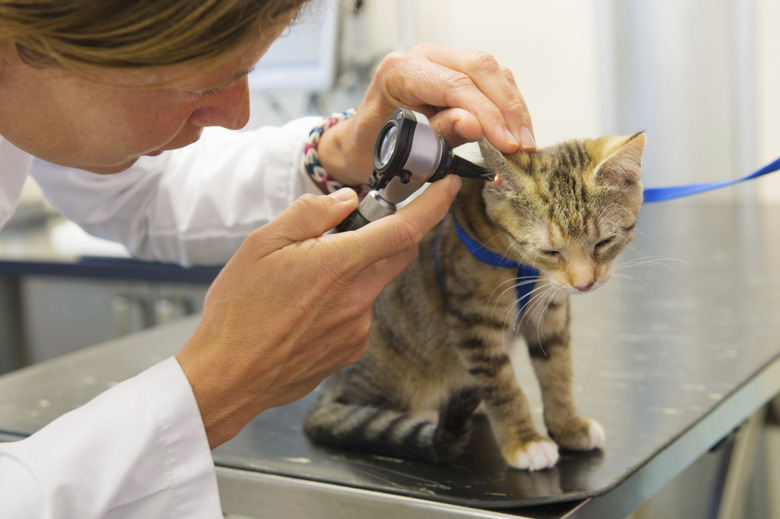How To Treat Wolf Worm In Cats
The good news is that wolf worms in cats are fairly rare. The bad news is that if your cat is invaded by a wolf worm or the wolf parasite — formally known as a cuterebra — it's one of the most disgusting things you might ever see. Imagine a hole on your cat, out of which emerges what looks like a large worm. In reality, it's a botfly larva. Veterinary attention is required immediately. Your vet must treat a cuterebra infestation, since it's imperative to remove the entire larva from your cat's body and get rid of all types of bot flies.
Cuterebra or wolf parasite in cats
Cuterebra or wolf parasite in cats
Female botflies lay eggs near nests of the principal hosts, generally rabbits or rodents. Felines aren't primary hosts for the cuterebra, but outdoor cats can pick up the parasite while checking out the living spaces of wild creatures. The larvae enter the cat's body through orifices or wounds, not via skin penetration. The best way to prevent cuterebra transmission to cats is by keeping them indoors.
Cuterebra symptoms in cats
Cuterebra symptoms in cats
If your cat develops a large, cyst-like lump on his head or neck, seek veterinary care. Although the lump can appear in other areas, it's uncommon. You'll see a small hole in the lump — that's how the larva get air. You might spot movement within the lump. If your cat can reach the growth, you'll notice him constantly grooming the area. Pus might come out of the hole, the result of a secondary infection. If untreated, the larva comes out of the hole approximately 30 days after infesting the cat.
Cuterebra treatment in cats
Cuterebra treatment in cats
After identifying the lump as cuterebra, your vet will remove the larva using forceps. The larva isn't necessarily easy to remove — it retreats from the forceps and must be fished out. It's extremely important to seek professional help to remove the larva rather than doing it yourself because any part of the larva left behind can result in a severe bodily reaction in the cat. The larva must be removed whole.
After the larva is gone, your vet will flush out the site and remove any unhealthy tissue. It can take some time for the wound to heal. Your vet might prescribe antibiotics for your cat. And you'll likely be advised to keep your cat indoors.
Cuterebra complications in cats
Cuterebra complications in cats
While most cats recover promptly from a cuterebra infestation, it can prove fatal if the larva migrates to the brain. Cats with larva in the brain develop neurological problems, including vision loss, circling, head tilt, behavioral changes, and seizures. The larva might attempt to exit through the nose, resulting in breathing issues.
Since the neurological symptoms resemble other disorders, your vet must perform magnetic resonance imaging (MRI) on the animal's brain. If the brain damage is extensive, your vet might recommend euthanization. However, if caught when symptoms first begin, your vet can administer medication to kill the cuterebra. Some cats, fortunately, will fully recover, while others will continue to experience neurological problems.


